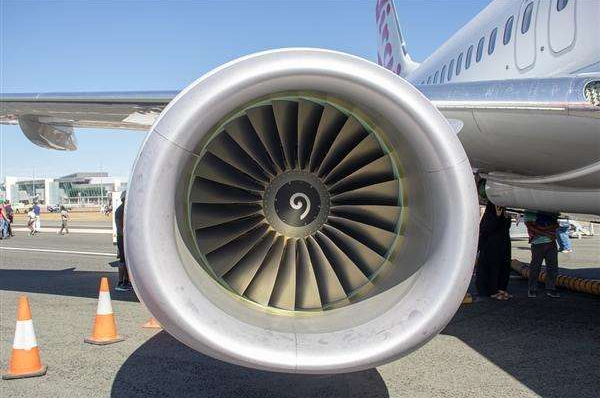

An important application of tungsten in aircraft--high specific gravity alloy
How can airplanes be sure to fly safely in the sky? In fact, in addition to the engine, fuselage, wings, elevators, there is a seemingly inconspicuous accessory hidden in the structure that is very important, we call it "balance counterweight". Some people think that the lighter the aviation material, the better, but this is a generalized view. Flying at an altitude of several kilometers at a high speed, the wind resistance and air pressure faced by the aircraft are unimaginable. The weak and weak body can only make the aircraft sway in the wind, and it is impossible to balance at all, let alone driving and control. Therefore, whether it is a passenger aircraft, a fighter jet or a helicopter, it is necessary to add a balance weight to the main parts such as the wing, engine shaft, fuselage, tail, main shaft (helicopter) to achieve the balance and stability of the aircraft.

When a pilot is flying an aircraft, the weight and gravity on board can affect the safety, handling and performance of the aircraft. It is critical to maintain a stable center of gravity at all times for optimal control and compliance with flight safety standards. After taking into account the necessary onboard equipment, fuel and passengers, more weight must be added or distributed to keep the aircraft within the allowable weight range. In order to accomplish this process, it is necessary to install the balance weights temporarily or permanently. Aerospace counterweight can increase the sensitivity of the control mechanism and keep the aircraft operation within an acceptable range, increase the weight, and maintain good stability and balance during high-speed flight.
Therefore, aircraft load balance is the key link to ensure flight safety. Selecting and optimizing the aircraft's weight balance device can make full use of the aircraft's payload, save fuel, and improve air transportation efficiency. The high specific gravity tungsten alloy is small in size, high in density, and easy to install and connect. It is a high-quality material for manufacturing aircraft counterweight balance blocks. Generally available for all types of aircraft, including commercial and military aircraft. So why is tungsten alloy used for aviation balance weights?
While early aircraft weights were often made of toxic lead materials, tungsten has become more popular in recent years due to its higher density at lower bulk levels. This refractory metal has a density of 18.75 g/m3 and is about 50-60% heavier than lead, and the resulting part is only about 60% the size of a corresponding lead part of the same weight. This means that the volume of the ballast components can be reduced by 40%. Since aircraft have limited space, compact and dense ballast types are favored in the aerospace industry. Tungsten alloys have a high density and small volume, which expands the distribution possibilities within an aircraft, especially in the tail or nose region of planes where space is limited.
In addition, high tungsten alloy not only has the advantages of high density, but also has the advantages of high strength and hardness, good thermal conductivity and weldability, good oxidation resistance, and small thermal expansion coefficient. It can also be used for aircraft load simulation during flight tests. Determine the precise location of the ballast under different payload conditions. In conclusion, tungsten alloy is currently the most effective material for balancing the overall weight of an aircraft. Balance weight components made of tungsten are easier to comply with AS9100 standards (AS9100 is an internationally recognized quality standard for the aerospace industry).
High specific gravity alloys made of tungsten are divided into W-Ni-Fe, W-Ni-Cu, W-WC-Cu, W-Ag, etc. according to the alloy composition characteristics and uses, and their density is between 16.5-19.0g/cm3 , Due to the need to mix volatile copper, nickel and gold metals, powder metallurgy is generally used to manufacture high specific gravity alloys, and such processes generally require a degree of sintering. Although there are also 3D printing technologies now that can realize the manufacture of tungsten alloys. However, tungsten is a refractory metal with a high melting point, so the production of high specific gravity alloys is still generally produced by traditional methods. For example, the hydrogen reduction sintering method, this more traditional method of sintering high specific gravity alloys is to install the compact in a graphite boat or molybdenum boat and sinter under the protection of hydrogen. In addition, there are vacuum sintering-isostatic pressing combined process, sintering-hot isostatic pressing process, etc.
Tungsten-based heavy alloys are generally classified as temporary and permanent on aircraft. Temporary are generally bolted to the structure of the aircraft, can be added and removed as needed, are marked with their purpose and total weight, and once the temporary ballast is removed, the weight and balance of the aircraft must be rechecked. The permanent balance piece must be fixed and labelled to prevent accidental removal from the aircraft. If someone does such a god operation, then the aircraft may have unforeseen consequences due to unbalanced sailing. .
Hot information

